Why Buy GIA Certified Diamonds?
When you buy a certified GIA diamond, you can rest assured that you’ve got the perfect gem. Find out about GIA certified diamonds today.
It's fair to say diamonds and gems aren't cheap, and when you're splashing a lot of cash on something as expensive as a diamond or gem, you'll want to make sure you get the best value for your money. When it comes to choosing the perfect diamond for your solitaire engagement ring or gem for a pair of ruby earrings, you need to be sure that you're getting the real deal. This is where the GIA come in. When you make the jump and buy a piece of jewellery with a certified GIA diamond or gemstone, you can rest assured that you've got the perfect gem.
What is the GIA?
The Gemological Institute of America (GIA) is a nonprofit institute dedicated to the study and education surrounding diamonds, gemology and jewellery art. The GIA's mission is simple; to protect buyers and sellers of gemstones and diamonds, by setting and maintaining the measurements used to evaluate the quality of a diamond or gemstone. The GIA's universally used grading system was developed in the 1940's, and uses the 4C's to objectively compare and evaluate the quality of a diamond.
So, when you go to buy that black diamond ring or blue sapphire tennis bracelet, you should check that your gems are GIA certified, or the seller operates on the GIA grading system.
How Did the GIA Scale Come About?
The GIA system was developed after Jewellers were using jargon that was easily misinterpreted. For example, phrases like ‘pique' was used to describe one thing when it meant another. The GIA developed acronyms to describe the quality of a jewel, and these terms have been used all over the world ever since.
The GIA Grading System
-
Flawless (FL) - No inclusions or blemishes are visible to a skilled grader using 10× magnification
-
Internally Flawless (IF) - No inclusions and only blemishes are visible to a skilled grader using 10× magnification
-
Very, Very Slightly Included (VVS1 and VVS2) - Inclusions are difficult for a skilled grader to see under 10× magnification
-
Very Slightly Included (VS1 and VS2) - Inclusions are minor and range from difficult to somewhat easy for a skilled grader to see under 10x magnification
-
Slightly Included (SI1 and SI2) - Inclusions are noticeable to a skilled grader under 10x magnification
-
Included (I1, I2, and I3) - Inclusions are obvious under 10× magnification and may affect transparency and brilliance
Source GIA
The GIA's 4c's.
Alongside the GIA's International Diamond Grading System, they also developed the 4C's. The four Cs look at the Clarity, Cut, Colour and Carat of the diamond. The clarity, cut and colour are all self explanatory, and one carat is equal to 0.2 grammes. Remember not to confuse carat with the gold purity term ‘karat'!
Diamond Appraisal Vs Diamond Certificates
When buying a diamond, it is important to acknowledge that some diamond retailers may try to pass a diamond appraisal off as a Diamond certificate. A diamond appraisal asses the value of a specific stone, by a professional appraiser trained in gemology and valuation. A diamond appraisal document states the value of a diamond (this can be disputed between appraisers), and is a completely different document to a certified GIA diamond certificate.



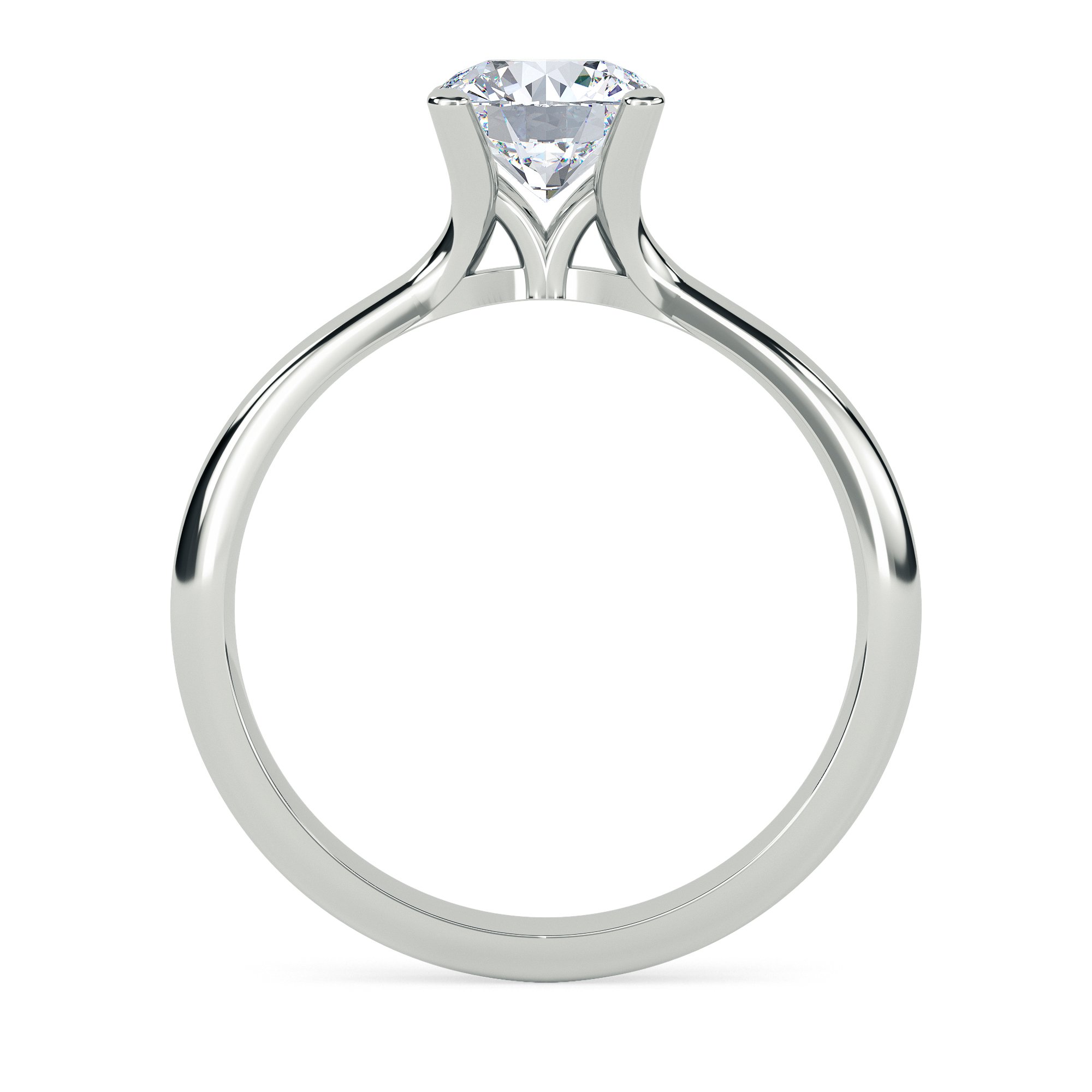
 Twitter
Twitter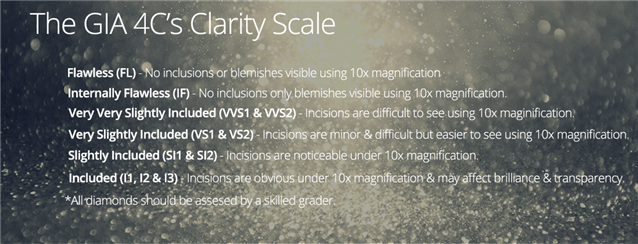
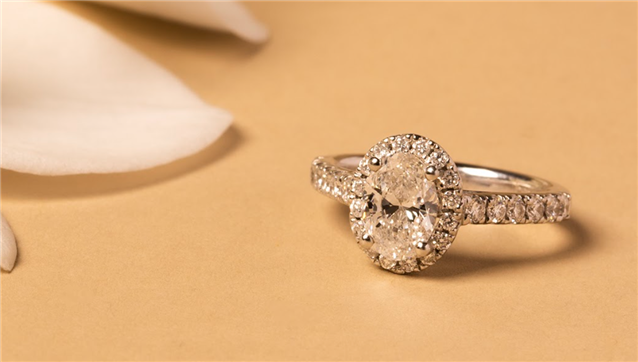 The anatomy of a Diamond Ring
The anatomy of a Diamond Ring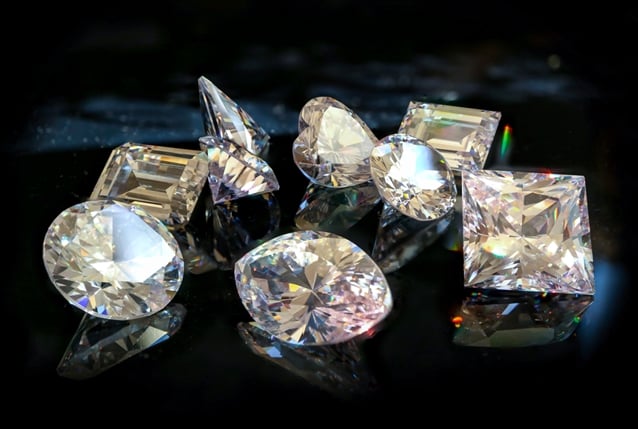 What is an Asscher Cut Diamond?
What is an Asscher Cut Diamond?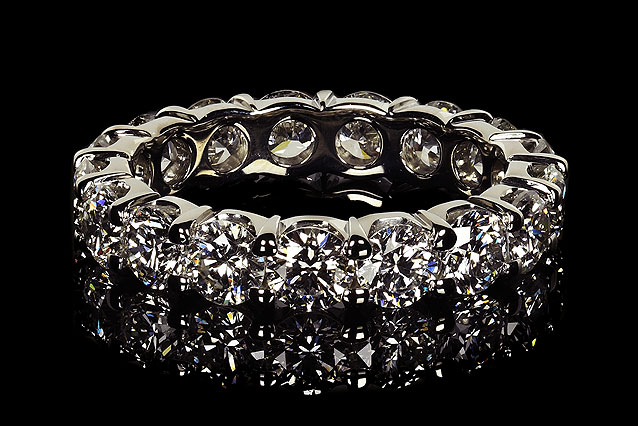 What Does Your Eternity Ring Say About You?
What Does Your Eternity Ring Say About You?